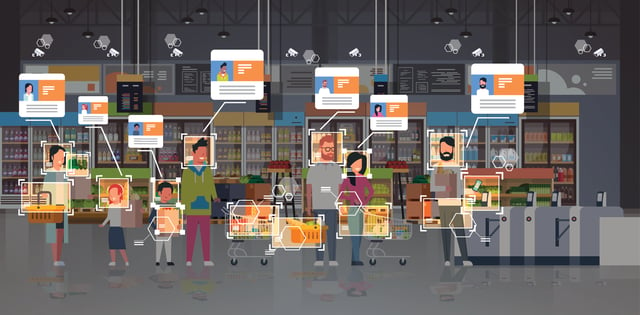Grocers That Miss the Omnichannel Wave of Disruption Risk Wipeout
The grocery industry is notorious for tight margins, high perishability and heavy reliance on promotions. It’s a prime target for competition, which is why grocers are facing wave after wave of disruption.
The first came years ago when Amazon and other ecommerce businesses began eating away at the edges of grocers’ already slim profit margins by competing on purchases of nonperishable consumer goods.
The second, bigger wave is hitting now, in 2019, as the “delivery economy” has added additional dimensions for grocers to consider. Grocery delivery can be a cash cow, but it also poses serious logistical challenges, from inventory management to storage. Direct-to-consumer meal-kit delivery services like HelloFresh pose a competitive threat, too. Promising fresh, quality ingredients landed directly on consumers’ doors without the need for grocery shopping, these apps appear to cut out the middle man. That’s why Kroger purchased Home Chef, Albertsons owns Plated, and retail stores accounted for 60 percent of all meal-kit user growth in 2018, according to Nielsen.
But the second wave of disruption that grocers are facing goes beyond that. Take a step back and consider the bigger picture. July marked the two-year anniversary of Amazon’s purchase of Whole Foods Market. Now, the ecommerce giant appears to be exploring a new chain built for both in-store shopping and pickup and delivery — with Whole Foods representing the beginning, not the end, of its foray into grocery.
Meanwhile, apps like Instacart have democratized delivery across the economy, creating on-demand consumer convenience at the push of a button. A premium has been placed on the retail experience, online and off, now that customers rely on multiple methods to get what they need, depending on what's easiest for them at that time.
So the question then becomes, how can legacy grocers keep up with the speed of change? These industry-wide changes are being driven externally, after all. What can grocers do to keep up with innovation that's being driven by the modern tech giants?
By providing shoppers with the convenience and personalization they crave, using the vast stores of information at their disposal, grocers are in a unique position. They have the opportunity to fight back using technology against technology.
Using artificial intelligence (AI), grocers have the capability to grow their profit margins by improving demand forecasting, making promotions more personalized and thus more effective, and streamlining their business to keep up with each new wave of technology-enabled disruption.
The fact is, grocers know a lot about consumers — what type of beer they like, their favorite pasta sauce, if they prefer almond or whole milk. It’s all listed and recorded across mountain ranges of data year over year, category over category.
How AI Technology Can Guide Customer Insights and Recommendations
Studying this data, grocers can find trends. They may find regional or seasonal patterns, for example. Or maybe they can find complementary goods, increasing the chance to raise the all-important basket price with the right promotion.
Using a blend of AI and machine-learning models, grocers can supercharge this type of analysis. What might take weeks or months of analysis done manually can be cut substantially as the right AI technology enables both automated and higher-level decision- making.
Now, not only can grocers find trends at the product, category or store level, but they can also find personal shopping trends. And with this level of insight, grocers can make more financially lucrative business decisions that meet the demands of their most discerning customers.
For example, a grocer might use AI models to determine which products to include in its weekly circular ads, what order they should place the items in, and what level of promotions they should offer for each item. Or they may decide to develop models that suggest personalized product recommendations and promotions based on triggers determined from past behavior — and integrate these into mobile apps that push notifications out at certain frequencies.
In this way, AI can also improve omnichannel strategies like click-and-collect by suggesting that customers pick up a discounted dinner when they pick up their groceries, incentivizing the customer to use the retailer in other ways.
The uses of AI in grocery are really just beginning. The future of grocery may have arrived, but what grocers make of it is really up to them.
Yet one thing is clear: Grocers that succeed in this new world of disruption will surely be the ones that start innovating now.












